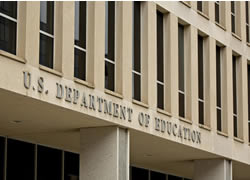UNITED STATES
 A new report from the US Government Accountability Office (GAO) has found that an effort by Congress to increase the rate of student loan forgiveness for Public Servants has largely failed.
A new report from the US Government Accountability Office (GAO) has found that an effort by Congress to increase the rate of student loan forgiveness for Public Servants has largely failed.
Congress created the program last year in response to a growing outcry from thousands of borrowers — nurses, teachers and other PS employees — that the requirements for the original Public Service Loan Forgiveness (PSLF) program were so rigid and poorly communicated that lawmakers needed to step in.
However, 99 per cent of loan forgiveness requests under that new Temporary Expanded Public Service Loan Forgiveness (TEPSLF) scheme were rejected during the program’s first year — roughly the same rate as before.
The GAO found the Department of Education processed roughly 54,000 requests and approved just 661, spending only US$27 million (A$39.3 million) of the $700 million (A$1 billion) Congress set aside for the program.
Press Secretary at the Department, Angela Morabito said it had taken steps to help borrowers better understand the complex eligibility requirements, application process, benefits, and other information related to both the original scheme and Congress’s program.
“The Department agrees with the GAO’s recommendations about how to improve the programs; a number of our efforts are already under way,” Ms Morabito said.
Many borrowers have come forward with their experiences of PSLF, believing for years that they were working toward loan forgiveness only to realise later they had been in the wrong repayment plan or held the wrong type of loan.
The GAO report said that when borrowers were rejected for TEPSLF, the letter they received did not clearly explain the options for requesting a second review of their claim.
“Given the high potential for error by the company that manages TEPSLF, it is especially important that borrowers understand how to dispute an erroneous rejection,” the report stated.
It also recommended that the Education Department streamline the TEPSLF application process and be much more transparent with borrowers about the program’s process and requirements.
Washington, DC, 6 September 2019



